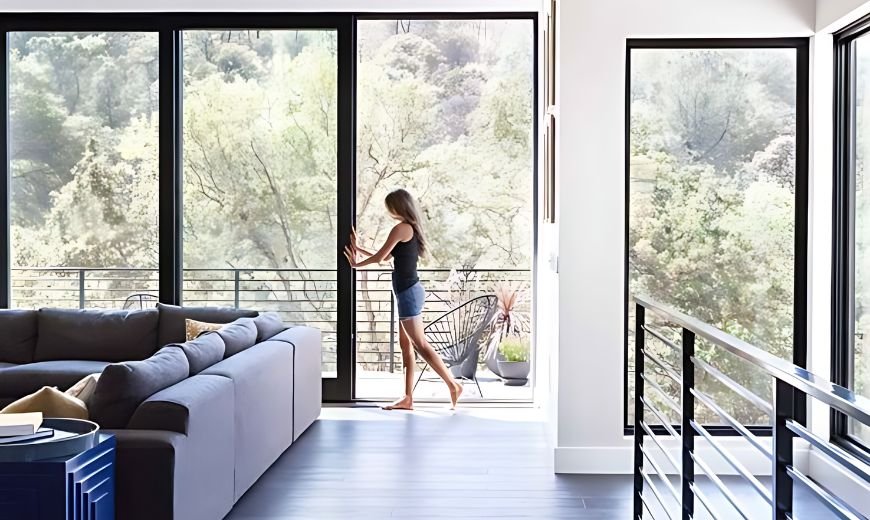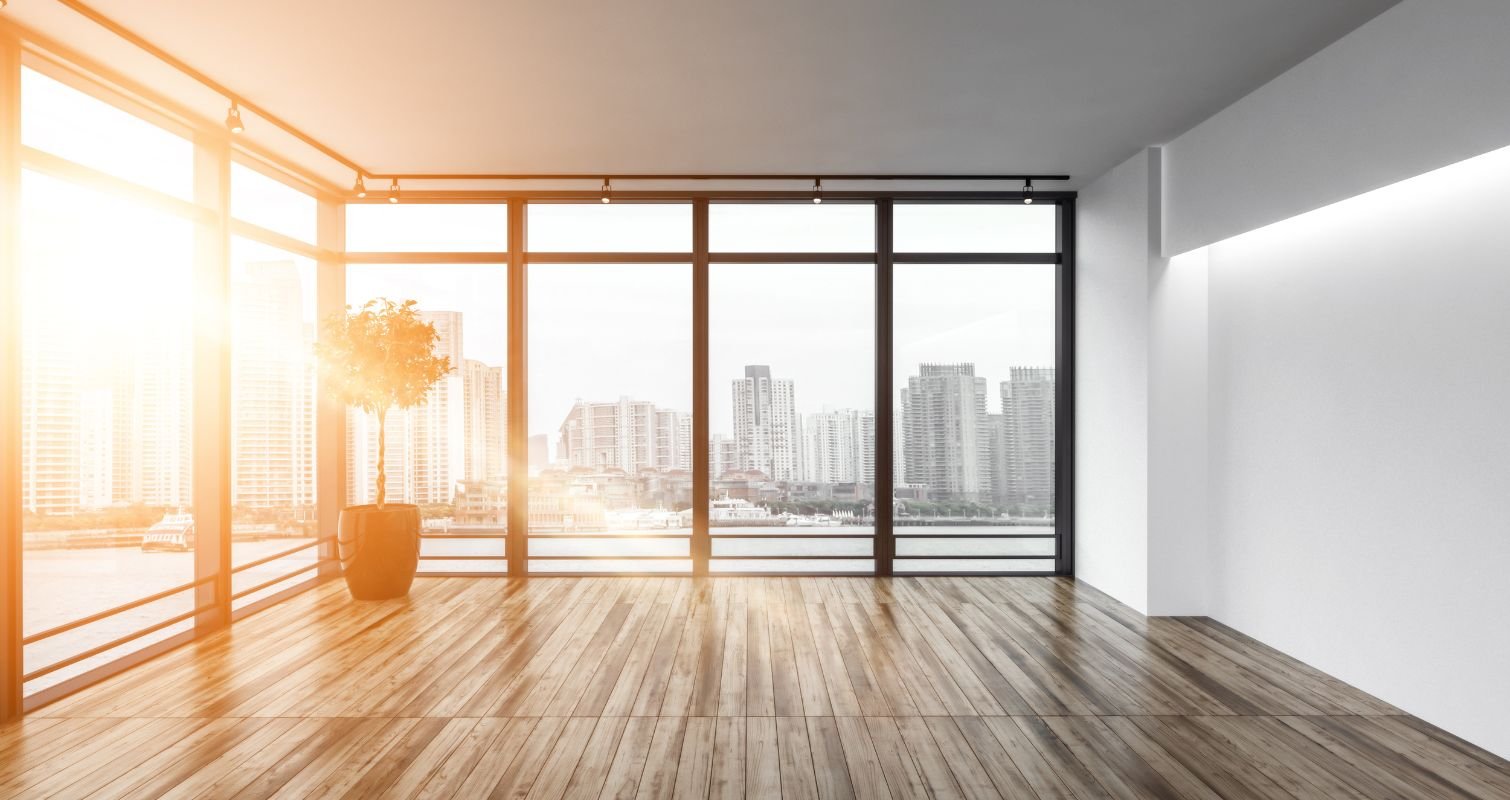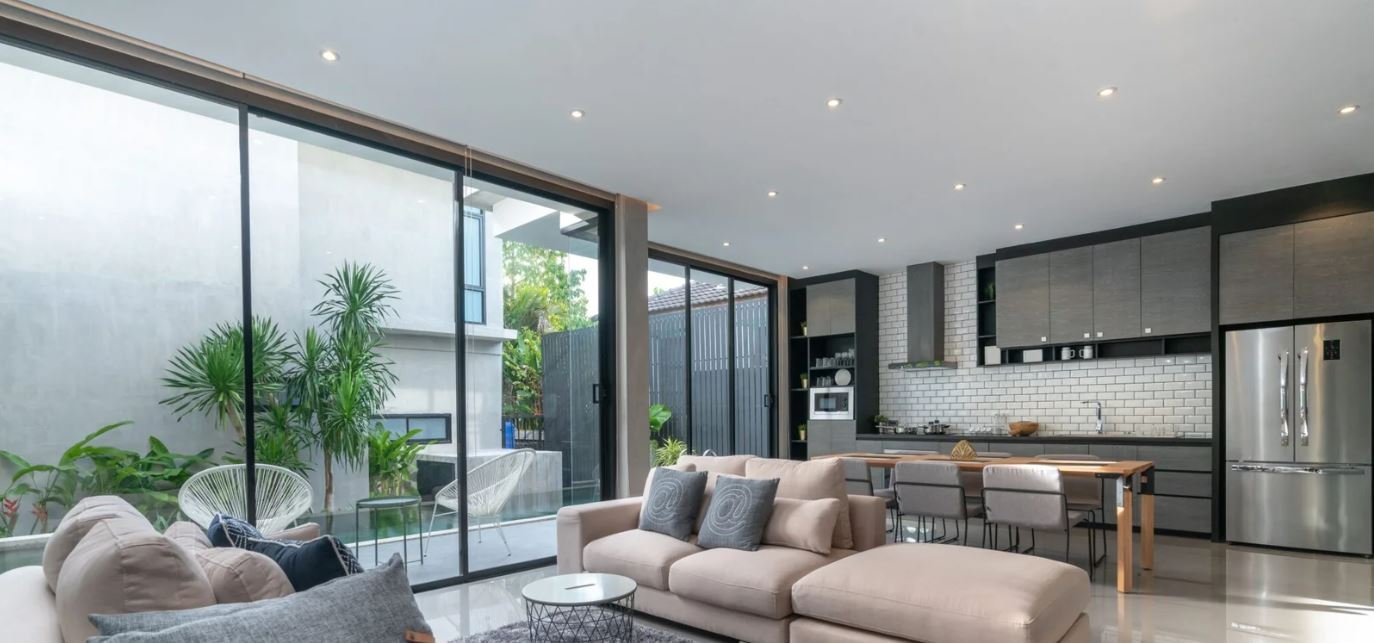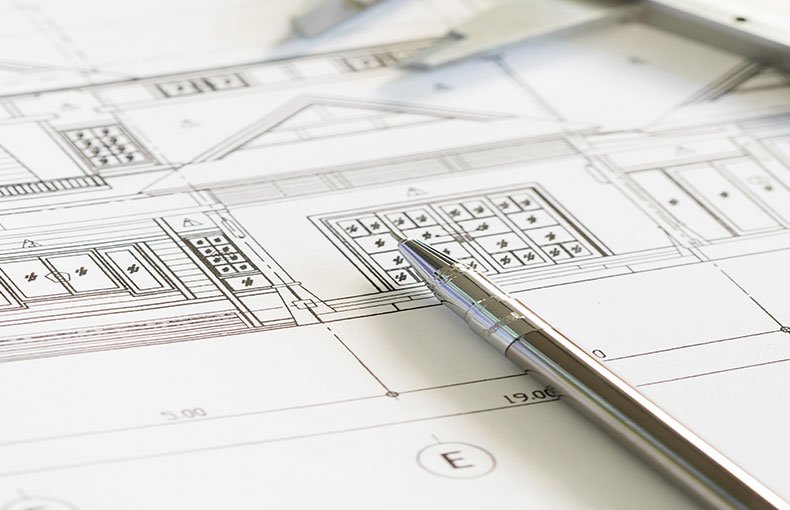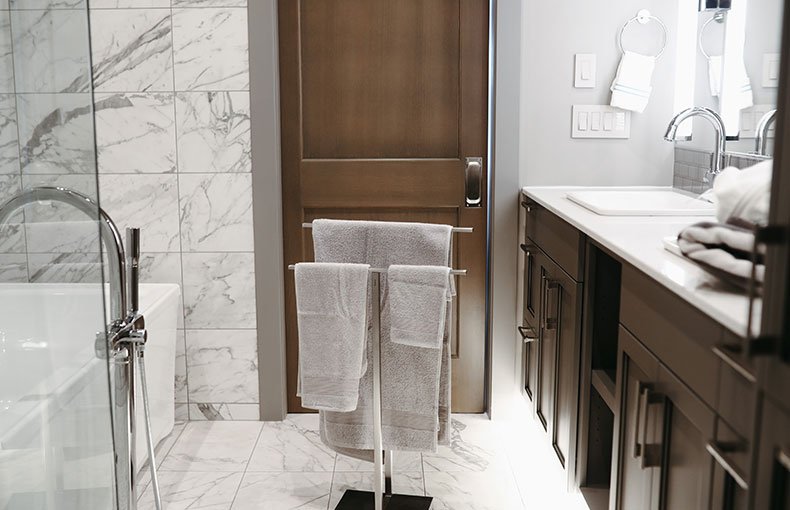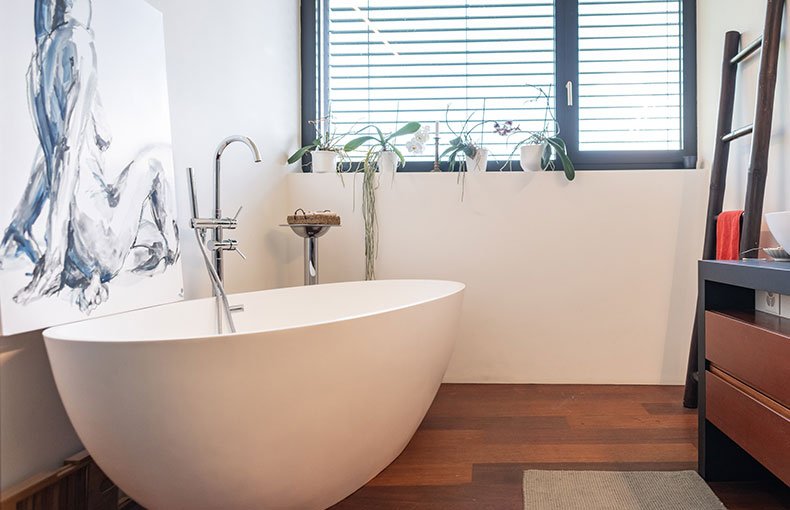Introduction to uPVC Doors & Windows uPVC, or unplasticized polyvinyl chloride, is a specialized form of PVC that stands out due to its rigidity and durability. Unlike PVC, which includes plasticizers to make it flexible, uPVC remains firm and structurally strong, making it an excellent material for constructing doors and windows. This is achieved through a chemical process where vinyl chloride monomers undergo polymerization, forming a stable and robust compound. One of the prime reasons uPVC is favored in modern construction is its impressive longevity. These doors and windows are highly resistant to weathering, rust, and physical impact, ensuring they remain functional and appealing for many years with minimal upkeep. Unlike wood, uPVC does not rot or require regular painting, and it fares much better against harsh environmental conditions than standard aluminum or steel frame options. Energy efficiency is another standout benefit of uPVC doors and windows. They provide excellent thermal insulation, reducing heat loss in the winter and keeping interiors cool during the summer. This can significantly lower energy consumption, leading to cost savings on heating and cooling bills. The airtight seals of uPVC windows also contribute to sound insulation, creating a quieter and more comfortable indoor environment. From an economic perspective, uPVC is a cost-effective choice. The initial investment in uPVC doors and windows is often lower than that of other materials, and the long-term savings due to reduced maintenance and energy bills further enhance its financial appeal. Additionally, the material’s lightweight nature makes it easier and less costly to transport and install. Environmentally, uPVC stands out for its recyclability. The manufacturing and disposal processes of uPVC have a relatively low environmental impact. It can be recycled and repurposed into new products, contributing to the circular economy and supporting sustainable building practices. As a result, uPVC has become a popular option for eco-conscious builders and renovators. Overall, the durability, low maintenance, energy efficiency, cost-effectiveness, and environmental benefits of uPVC doors and windows make them a preferred choice in the construction and renovation sectors today. Exploring System Aluminum Doors & Windows System aluminum doors and windows represent a sophisticated evolution in architectural design, leveraging the inherent strengths of aluminum but taking them to a higher echelon of performance and aesthetics. Unlike regular aluminum, system aluminum is engineered with a focus on enhanced structural integrity and durability. This specialized aluminum variant is composed with meticulous precision, allowing it to support large panes of glass while maintaining robust stability. This capability enables architects and homeowners to achieve broad, uninterrupted views without compromising on strength or safety. One of the primary advantages of system aluminum doors and windows is their impressive resistance to corrosion. The material’s natural properties ensure it remains unaffected by adverse weather conditions, thereby reducing the need for frequent maintenance. This low-maintenance feature makes system aluminum an attractive option for both residential and commercial projects. Furthermore, system aluminum offers a sleek and modern aesthetic that can complement a variety of architectural styles, adding a touch of elegance and sophistication to any property. The thermal performance of system aluminum doors and windows is another critical aspect. When combined with thermal breaks and advanced insulation techniques, system aluminum frames can significantly enhance energy efficiency. Thermal breaks are barriers within the aluminum frame that reduce the transfer of heat, maintaining comfortable indoor temperatures while minimizing energy consumption. This means that properties with system aluminum installations can benefit from lower heating and cooling costs, helping to create an environmentally sustainable living space. When comparing system aluminum to uPVC (Unplasticized Polyvinyl Chloride) doors and windows, several factors come into play. While uPVC is known for its excellent insulation properties and cost-effectiveness, system aluminum offers superior strength and a more modern appearance. The choice between the two materials often hinges on personal preferences, specific performance requirements, and budget considerations. For instance, system aluminum might be preferred in high-rise buildings where structural strength is paramount, or in contemporary designs where a minimalist look is desired. On the other hand, uPVC could be more suitable for residential settings where energy efficiency and affordability are the top priorities.
Understanding UPVC Doors & Windows UPVC, or Unplasticized Polyvinyl Chloride, is a type of plastic that is widely used in the construction industry for manufacturing doors and windows. UPVC is created through a process of polymerization, where vinyl chloride monomers are transformed into a rigid, durable material. This production method yields a product that is both strong and versatile, making it an ideal choice for modern building requirements. One of the most notable characteristics of UPVC doors and windows is their exceptional durability. Unlike traditional materials such as wood and steel, UPVC is resistant to rotting, warping, and corrosion. This robustness ensures a longer lifespan, often exceeding 20 years, with minimal maintenance efforts. Moreover, UPVC does not degrade when exposed to harsh weather conditions, including heavy rain, snow, or intense sunlight. The low maintenance aspect of UPVC components cannot be overstated. Cleaning these doors and windows requires nothing more than occasional wiping with a damp cloth to retain their pristine appearance. Furthermore, UPVC does not require painting or varnishing, eliminating the need for frequent upkeep. Thermal efficiency is another significant advantage. UPVC doors and windows provide excellent insulation properties, reducing heat loss in the winter and keeping interiors cooler in the summer. This can lead to substantial savings on energy bills. Similarly, the material’s sound insulation capabilities make it an ideal choice for homes and offices situated in noisy environments, as it can effectively block external noises. Additionally, UPVC is resistant to chemicals, which further enhances its durability and enables its use in various environments without the risk of degradation. The design flexibility of UPVC doors and windows is another appealing feature. Available in a plethora of styles, colors, and finishes, they can be customized to suit the aesthetic preferences and architectural requirements of any building. From simple, understated designs to intricate, decorative patterns, the options are practically limitless. This adaptability makes UPVC a preferred choice for both residential and commercial applications. Real-life examples testify to the benefits of UPVC. Homeowners often appreciate the balance of functionality and aesthetic appeal, while commercial property managers value the long-term cost savings and low maintenance. For instance, a homeowner in a coastal area might choose UPVC windows to combat the corrosive effects of salt air, while a business in a bustling urban center might install UPVC doors to mitigate traffic noise. When compared to materials like wood and steel, UPVC offers several advantages. Wood, though aesthetically pleasing, requires regular maintenance and is prone to termite attacks and rot. Steel, while durable, is susceptible to rust and requires protective coatings. In contrast, UPVC combines the best of both worlds—offering durability, aesthetics, and minimal maintenance. Consequently, UPVC has emerged as a popular choice in contemporary architectural design, fulfilling both functional and decorative requirements. Exploring System Aluminum Doors & Windows System aluminum doors and windows represent the pinnacle of modern architectural design, characterized by their sleek and contemporary appearance. The manufacturing process of these doors and windows involves precise engineering and high-quality finishes, ensuring robust and long-lasting products. Aluminum’s inherent properties contribute significantly to their reliability. As a lightweight yet strong material, aluminum is resistant to corrosion, making it an ideal choice for various climatic conditions. A critical aspect of system aluminum doors and windows is the application of thermal break technology. This advanced technology enhances energy efficiency by reducing heat transfer through the frame, effectively contributing to better insulation properties. This ensures that homes and buildings maintain their internal temperatures more consistently, resulting in reduced energy consumption and lower heating or cooling costs. Additionally, the longevity of aluminum is further improved through the anodization or powder-coating finishes, which add an extra layer of protection against the elements. The design flexibility of system aluminum doors and windows allows for extensive customization, catering to a variety of architectural styles and personal preferences. From minimalist frames to expansive glass panels, aluminum systems can be tailored to meet specific design requirements, offering both aesthetic and functional benefits. This versatility is one of the main reasons why aluminum systems are preferred in both residential and commercial projects. When compared to other materials such as wood or uPVC, aluminum stands out for its durability and minimal maintenance requirements. Unlike wood, which can warp or rot over time, aluminum maintains its structural integrity for decades. Similarly, while uPVC can degrade under intense sunlight, aluminum’s resilience to UV radiation ensures enduring performance. Environmentally, aluminum is highly recyclable, making it a more sustainable option in the construction industry. Practical insights from customers further underscore the value proposition of system aluminum doors and windows. Users frequently highlight their satisfaction with the sleek look, durability, and energy efficiency. These testimonials, combined with the material’s technical advantages, position system aluminum doors and windows as an exceptional choice for modern construction projects looking to balance aesthetics, functionality, and sustainability.
“`html Understanding uPVC Doors & Windows uPVC, or unplasticized polyvinyl chloride, is gaining traction as a favored material for doors and windows among homeowners and builders alike. This surge in preference is rooted in several compelling properties intrinsic to uPVC, which make it an attractive alternative to traditional materials such as wood and aluminum. One of the primary advantages of uPVC lies in its exceptional durability. Unlike wood, uPVC is resistant to rot, corrosion, and pests, affording it an extended lifespan even in adverse climatic conditions. Another key benefit of uPVC is its superior energy efficiency. uPVC doors and windows are designed to provide excellent insulation, minimizing heat loss during winter and keeping interiors cooler in the summer. This results in significant energy savings, making uPVC an ideal choice for eco-conscious homeowners. Furthermore, its low thermal conductivity contributes to a more stable internal temperature, enhancing overall comfort within the home. Maintenance is another area where uPVC outshines its counterparts. Unlike wooden frames, which require periodic sanding, varnishing, and painting, uPVC frames demand minimal upkeep. Simple regular cleaning with soap and water suffices to keep them in pristine condition. This low-maintenance attribute is particularly appealing to busy homeowners who seek a balance between functionality and ease of care. When it comes to aesthetics, uPVC doors and windows are available in a diverse array of styles and designs, catering to various architectural preferences and needs. From classic to contemporary aesthetics, the versatility of uPVC allows it to blend seamlessly with any home design. Moreover, advancements in manufacturing technology have led to an array of color and finish options, enabling homeowners to customize their installations to match their personal taste. In terms of cost-effectiveness, uPVC is a highly economical option. Not only are the initial costs lower compared to materials like wood and aluminum, but the long-term savings on maintenance and energy bills further amplify its value proposition. Additionally, uPVC is recyclable, making it an environmentally friendly choice, aligning with the growing trend towards sustainable building practices. While uPVC does have its potential drawbacks, such as a relatively lower resistance to very high temperatures and limited color flexibility compared to aluminum, the advantages it offers in terms of durability, energy efficiency, low maintenance, design versatility, and cost-effectiveness make it a go-to option for modern doors and windows. “` Exploring System Aluminum Doors & Windows System aluminum doors and windows present a modern, sleek, and lightweight alternative to traditional building materials, making them highly attractive in contemporary construction. One of the primary advantages of aluminum is its remarkable structural integrity. Despite its light weight, aluminum boasts excellent strength and durability, making it an ideal choice for structural components that need to support large glass panes without cumbersome frames. Flexibility is another key benefit of system aluminum. It can be easily shaped and customized for a wide range of designs and applications. This flexibility allows architects and designers to implement narrow sightlines, which maximize the glass area and create unobstructed views, enhancing the overall aesthetic appeal. Additionally, aluminum profiles can be anodized or coated with various finishes, including powder coatings, to match specific color schemes or provide additional protective layers. Furthermore, aluminum is inherently resistant to corrosion, a feature that prolongs the lifespan of doors and windows even in harsh environmental conditions. This resistance reduces maintenance requirements and contributes to long-term cost savings. Moreover, the advent of thermal break technology has significantly improved the thermal performance of aluminum systems. By incorporating insulating barriers within the aluminum frame, these doors and windows drastically reduce heat transfer, increasing energy efficiency and helping to maintain indoor comfort across various climates. While system aluminum doors and windows offer numerous benefits, several considerations are essential when choosing this material. The cost of aluminum can be higher than that of traditional materials like uPVC or wood. However, many argue that the long-term durability and reduced maintenance offset the initial investment. Installation can also be more complex, requiring specialized skills and equipment to ensure optimal performance and safety. Longevity and maintenance depend on the quality of the aluminum system and the treatments applied to the surface, making it crucial to select reputable manufacturers and installers. By understanding these factors, builders and homeowners can make informed decisions, recognizing why system aluminum doors and windows are becoming increasingly popular in both residential and commercial applications.
Introduction to UPVC Doors and Windows Unplasticized Polyvinyl Chloride (UPVC) is a robust and rigid form of PVC that is commonly utilized in the manufacturing of doors and windows. UPVC’s composition involves the polymerization of vinyl chloride monomers, reformulated to exclude plasticizers, yielding a sturdier and more durable material. This unique formulation bestows UPVC with several properties tailor-made for the construction of doors and windows. One of the standout advantages of UPVC is its remarkable durability. Unlike wood, which is susceptible to rotting, and aluminum, which can corrode over time, UPVC withstands the adversities of weather without degrading. This resilience makes UPVC doors and windows ideal for a variety of climates, from the humid tropics to the harshest winters. In addition to durability, UPVC is known for its low maintenance requirements. The material does not need painting or sealing, unlike wooden counterparts. Cleaning UPVC surfaces is straightforward, often requiring nothing more than a mild detergent and water. This ease of maintenance not only saves time but also reduces long-term upkeep costs. Energy efficiency is another key advantage of UPVC doors and windows. The material’s inherent insulation properties contribute significantly to heat retention, helping to maintain indoor temperatures and reduce energy bills. UPVC frames are designed to accommodate double or triple glazing, further enhancing thermal and acoustic insulation. When it comes to aesthetics, UPVC doors and windows come in a wide array of styles and finishes. From classic casement windows to contemporary sliding doors, there is a design to suit virtually any architectural style. Modern manufacturing techniques also allow UPVC to mimic the appearance of wood, providing homeowners with the desired look without the associated maintenance. Moreover, UPVC is a cost-effective alternative to traditional materials. Not only is the initial investment in UPVC doors and windows generally lower, but the material’s longevity and minimal maintenance requirements also add to its cost-effectiveness over time. In essence, UPVC doors and windows offer a blend of durability, ease of maintenance, energy efficiency, and cost-effectiveness, making them a preferred choice for modern construction. Understanding System Aluminum Doors and Windows System aluminum doors and windows represent a sophisticated and high-performance solution in modern architecture. Aluminum, as a construction material, is prized for its exceptional strength, lightweight nature, and inherent resistance to corrosion. These characteristics make it an ideal choice for building robust and durable doors and windows that require minimal maintenance over their lifespan. The term ‘system aluminum’ refers to the integrated approach to door and window design, where aluminum is used in meticulously engineered systems that deliver superior functionality. One of the primary advantages of system aluminum is its enhanced thermal insulation. Advanced design techniques, such as thermal breaks and specialized glazing, significantly reduce heat transfer, ensuring energy efficiency and maintaining comfortable indoor temperatures. Additionally, system aluminum offers excellent soundproofing capabilities, providing a quieter indoor environment by minimizing external noise intrusion. A notable feature of system aluminum doors and windows is their design flexibility. Aluminum’s strength allows for the creation of slim, sturdy frames that can support large glass panels, maximizing natural light penetration and offering unobstructed views. This characteristic not only enhances the aesthetic appeal with a sleek, modern appearance but also promotes a harmonious connection between indoor and outdoor spaces. From an architectural perspective, the versatility and adaptability of system aluminum doors and windows are unmatched. They can be customized to fit diverse design specifications, making them suitable for various applications, from residential homes to commercial buildings. The ability to design larger openings and integrate seamless elements contributes to contemporary, minimalist designs that are both practical and visually stunning. When compared to other materials such as wood or uPVC, system aluminum stands out due to its superior durability and low maintenance requirements. While the initial cost of system aluminum doors and windows might be higher, their long-term benefits—such as energy savings, durability, and reduced maintenance—often justify the investment. Moreover, the lightweight property of aluminum simplifies the installation process, further offsetting some of the initial costs.
Understanding UPVC Doors and Windows Unplasticized Polyvinyl Chloride (UPVC) is a highly durable material predominantly used in the construction of doors and windows. Originally derived from a polymer, UPVC undergoes a complex manufacturing process that involves the suspension of Polyvinyl Chloride (PVC) in an unplasticized form, resulting in a rigid and resilient material. Unlike traditional PVC, the absence of added plasticizers in UPVC makes it less flexible but significantly sturdier, thus ideal for structural applications. One of the standout features of UPVC doors and windows is their exceptional energy efficiency. The material’s low thermal conductivity ensures that heat transfer between the inside and outside of a building is minimized, making rooms warmer in winter and cooler in summer. This quality significantly contributes to reduced energy consumption, hence making UPVC an environmentally friendly choice. Durability is another crucial characteristic of UPVC. Due to its robust nature, UPVC doors and windows are resistant to various environmental conditions like moisture, corrosion, and mold, ensuring longevity and minimal maintenance. Additionally, the cost-effectiveness of UPVC makes it accessible for a wide range of architectural projects, from residential homes to commercial buildings. UPVC doors and windows are available in a variety of types including casement windows, sliding windows, tilt and turn windows, and French doors. Their aesthetic versatility is enhanced by the availability of different colors and designs, allowing homeowners and builders to choose options that best suit their aesthetic preferences and functional needs. Typical applications of UPVC doors and windows range from residential properties to commercial buildings, owing to their superior insulation properties and ease of maintenance. However, it is important to note that UPVC is not without its drawbacks. Over time, exposure to harsh sunlight may lead to color fading, and while UPVC is strong, it generally does not match the sheer strength of metal alternatives like aluminum. Insights into System Aluminum Doors and Windows System Aluminum has firmly established itself in the doors and windows market by offering a range of noteworthy advantages. System Aluminum refers to integrated window and door systems that are constructed predominantly from aluminum, a material celebrated for its robustness and longevity. The composition of these systems typically involves high-grade aluminum alloys which deliver superior structural integrity while also being lightweight. One of the primary advantages of using System Aluminum in doors and windows is its unmatched strength. Aluminum’s inherent durability ensures that frames remain structurally sound over long periods without warping, cracking, or corroding. This longevity translates to reduced maintenance costs and the extended lifespan of the installation. Moreover, aluminum adds a sleek, modern aesthetic to buildings, contributing to its popularity in contemporary architectural designs. Another significant benefit is recyclability. Unlike many other building materials, aluminum can be recycled multiple times without losing its properties, making it an environmentally responsible choice. Additionally, System Aluminum can be easily customized to fit diverse design requirements, providing flexibility in architectural applications. However, there are certain drawbacks to consider. The initial cost of System Aluminum can be higher compared to other materials like UPVC. This higher upfront investment may be a deterrent for some, despite the long-term savings associated with its durability and minimal maintenance needs. Additionally, aluminum is a good conductor of heat, which can lead to thermal conductivity issues. To address this, thermal breaks are incorporated into the frames, improving energy efficiency by reducing heat transfer. System Aluminum is particularly beneficial in high-rise buildings and modern architectural projects where structural integrity and aesthetic appeal are paramount. It is also well-suited to various architectural styles and climates, thanks to the range of finishes and coatings available, such as anodized or powder-coated surfaces, which can enhance durability and design versatility.
A faceting effect livens up and interrupts the cubism that sets the morphology of the West system apart from the cliches of modern design. Characterised by its suitability for use in a wide range of different…
A faceting effect livens up and interrupts the cubism that sets the morphology of the West system apart from the cliches of modern design. Characterised by its suitability for use in a wide range of different…
A faceting effect livens up and interrupts the cubism that sets the morphology of the West system apart from the cliches of modern design. Characterised by its suitability for use in a wide range of different…
A faceting effect livens up and interrupts the cubism that sets the morphology of the West system apart from the cliches of modern design. Characterised by its suitability for use in a wide range of different…
A faceting effect livens up and interrupts the cubism that sets the morphology of the West system apart from the cliches of modern design. Characterised by its suitability for use in a wide range of different…
- 1
- 2











